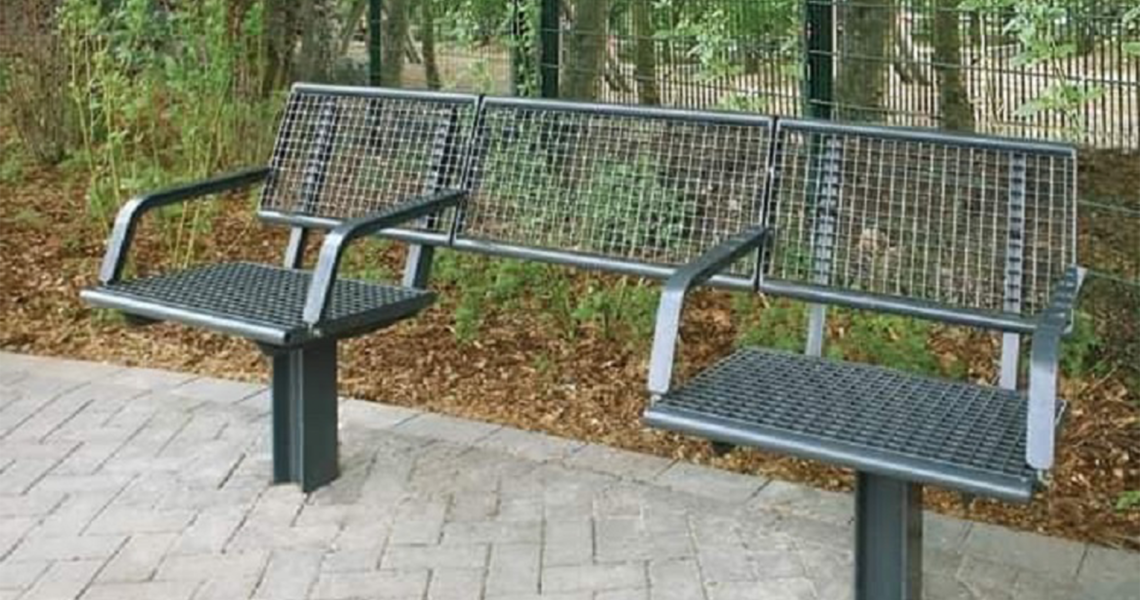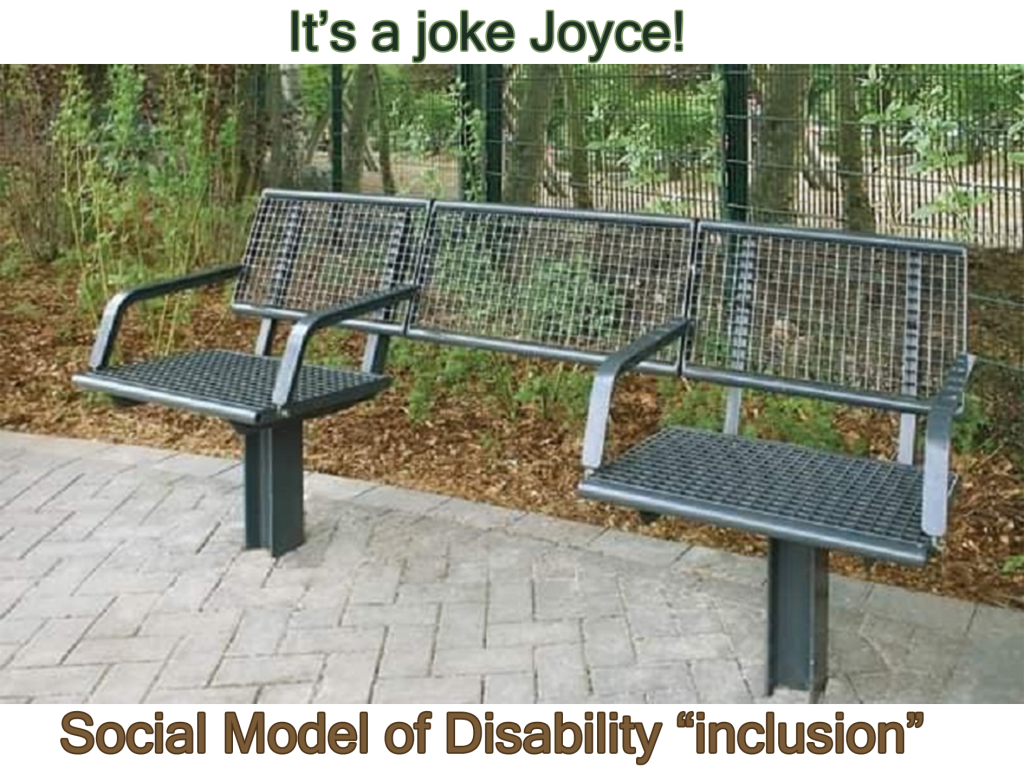
Australia’s proud culture was built on taking the Micky out of all and sundry especially ourselves. Jokes are a fantastic tool to allow people to see and be educated in the variation in culture and individual situations. An individual reaction to a joke provides an insight into that individual’s belief system. Nothing more, nothing less.
Offense comes from within the self and cannot be blamed on what another person says or does or doesn’t say or do. Our reactions tell us everything about ourselves, our beliefs, and what we want from a self-same selfish perspective.
Somehow today to tell a joke or have different to ‘my opinion’ is a sin against the obsessive and damaging human right of one person not being allowed to say anything another person disagrees with and takes personal offense to.
Consider two well matured women travelling on a train together. During the journey they spoke on a few different topics. Then the discussion turned to a sensitive to some issue about a female and accusations she had made against a male public figure which had been broadly reported in the press. The women agreed on some aspects and differed in opinion on other aspects of the case. The conversation was feisty, sometimes light-hearten with no aggression. A non-related young male was sitting on a seat on the other side of the carriage. His dress and appearance and vocal tone suggested he was gender confused. This young man had been eavesdropping on the women’s conversation and suddenly and aggressively told the women to stop discussing the issue as their conversation was offensive to the female described in the press. A female who was not present.
Was the young man an offense warrior on patrol?
If the women were too loud the young man could have asked the women to lower their voices, but he did not. The young man could have invited himself into the conversation to offer his point of view, but he did not. The expectation was that the young man had the right to close down the conversation of other people because his beliefs differed from theirs.
The young man did not react pleasantly when one of the well matured women advised him he did not have to listen to their private conversation and suggested to him that he was able to move somewhere else on the non-crowded train if he did not like overhearing the women’s conversation.
A person cannot be made to be responsible for everyone else’s reactions to words or behaviours. Yet obsessive and damaging human right activists are making headway pulsating this illusion.
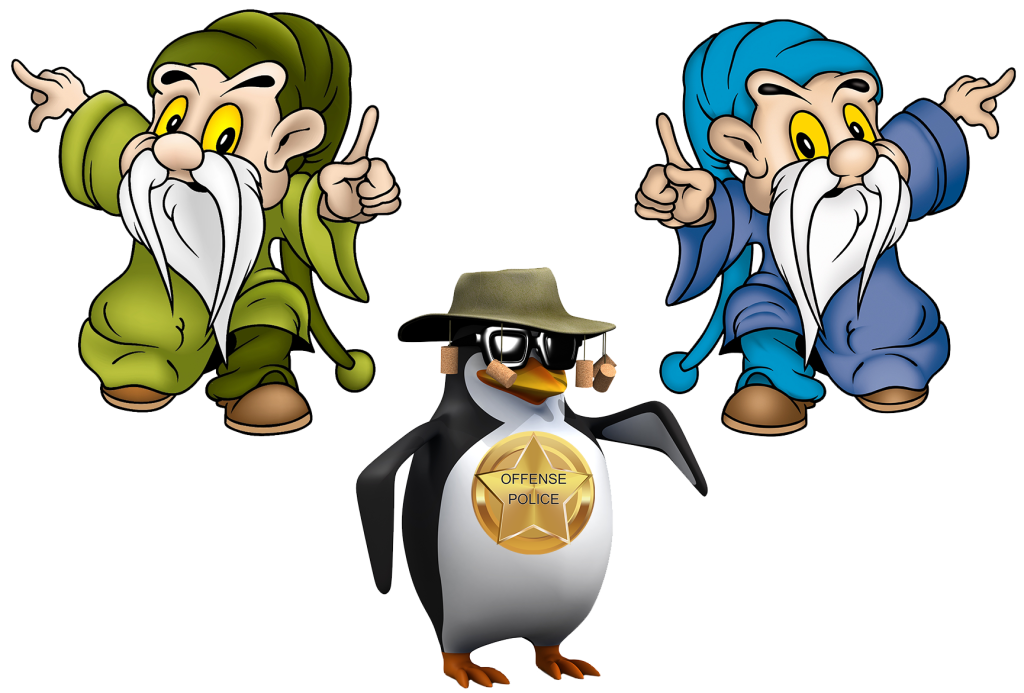
Where does the reader sit in reaction to the following?
Two baked beans were travelling around Australia, do you know where they ended up?
- In cairns
What do you call a disabled Asian?
- Sum Ting Wong.
Oh Maria, that joke is so off, just so off! But… I laughed… it is funny!
The disabled toilet is over there.
- Why would anyone want to relieve themselves in a ‘disabled’ toilet? Surely it would be messy!
You know the people living in Eltham can’t be buried at Eltham Cemetery
- Why?
- Because they are still alive.
Why don’t blind people skydive?
- Because it scares their dogs too much!
A blind man walks into a bar.
- And a table. And a door. And a staircase.
Three disabled guys (a blind man, an amputee, and a guy in a wheelchair) are flying back with the USA team from the Paralympic games in the Middle East when their plane crashes in the Sahara Desert. The three disabled guys (the only survivors) are now stranded and wait for someone to rescue them, but no one showed. They start to get really thirsty, so they decide to seek out water. The amputee leads the way, with the blind man pushing the guy in the wheelchair; and eventually they find an oasis. The amputee leader goes into the water first, cools himself down, drinks a load of water, walks out the other side and lo and behold, he has a NEW LEG! He gets excited and encourages his friends to do the same. The blind man offers to push the guy in the wheelchair, but he gets refused because the guy in the chair wants to be Mr Independent and insists the blind man goes ahead first. So, he goes into the water, cools himself down, drinks a load of water, walks out the other side and lo and behold, he can SEE! Now the guy in the wheelchair’s getting really excited, starts pushing with all his might, goes into the water, cools himself down, drinks a load of water, and wheels out the other side. Lo and behold, NEW TYRES!!!
I just wanted to say… These disabled jokes are quite offensive. I’m not disabled in any way, but people reading might be affected in many ways. Yes, some of them are amusing, but there’s a difference between having a joke and being plain rude. Please take my feedback into account. Thanks!
Ever since I needed a wheelchair, my husband has been so rude. He’s been pushing me around and talking behind my back.
I am disabled and I find these jokes appropriately hilarious.
I met a guy in a wheelchair today. His face was battered and bruised. “What happened to your face?” I asked.
- “I’m a Paralympian,” he replied.
- “Boxing?”
- “No, … hurdles.”
What did the ramp say to the man in a wheelchair?
- I’m inclined to help you get to where you need to go.
Why can’t a bicycle stand up by itself?
- Because it’s two tyred!
There is a young man smoking and a woman in a wheelchair. The woman says, “why is a young man like you smoking?”. The young man turns around and says, “why the f*** are you wearing trainers?”
I hate it when disabled people get bullied…
… because they can’t stand up for themselves
A boy with Down Syndrome was talking with his mom.
“Mom, why did God make me like this?”, he said
“It’s because God made you special.”, she said. “Just kidding, I was only talking about your needs.”
I used to get pushed and called lazy in school
Man, I loved that wheelchair
My son is so ungrateful. I bought him a trampoline and all he does is sit in his wheelchair and cry all day.
Why did the one handed man cross the road?
- To get to the second-hand store!
The modern social model of disability inclusion concept is too horrible for words!
It is a joke Joyce!
One needs to be excluded from being ‘normal’ before one can be included in normal society. One has to be made ‘special’ with special needs to be acknowledged as requiring assistance. One has to be seen as adding ‘diversity’ to the normal crowd. One has to demand that every stair is replaced by a ramp and that every restaurant should accommodate wheelchairs just like theirs. Females must feel inferior as life is harder for them and they are weaker just because of their genitalia. Shrill a cultural or linguistical background of the ‘right’ kind to obtain funding and preferential treatment.
Adding a wheelchair user symbol on a ‘We are the misfits in society’ inclusion flag is an unbelievable act of ignorance.
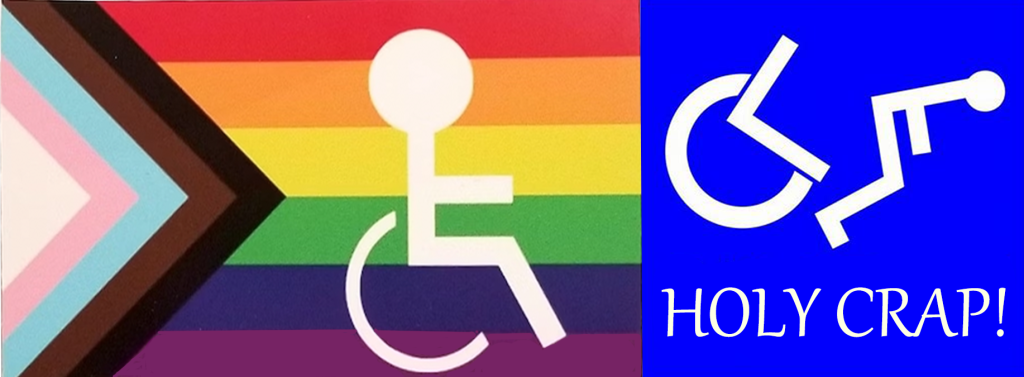
Removing barriers to inclusion – first step is to stop using models such as the ‘social’ model of disability and the comparison with and put down of the ‘medical’ model of disability.
Second is to stop creating flags using subconscious connections such as rainbows and baby boy blue and baby girl pink.
The arguments about the models rather than focusing on what people with limited capacity need in their normal life hinder rather than help inclusion.
The social model insists that ‘impairments’ magically become ‘invisible’. Society cannot include if society cannot hear or cannot see or understand.
Age does not cause paraplegia. Yet a paraplegic who is 64 years and 364 days old qualifies for the National Disability Insurance Scheme whereas a paraplegic who is one day older, that being 65 years of age does not qualify for the National Disability Insurance Scheme. I guess this exclusion legislation was based on the social model of disability being blind to the impairment of paraplegia being part of the individual’s physical condition and has nothing to do with the age of the individual.
Society now has many new models of disability that have evolved from the social model. These include the cultural, citizenship, socio-relational, political, human-rights and biopsychosocial models.
Great! In some states of Australia an inclusive result is people who are classified as blind can now park in wheelchair user bays because they are socially modelled as ‘disabled’. A white cane is not a mobility aid in the same sense as a wheelchair. By moving a white cane in front of them a person who cannot see is able to detect all obstacles and hazards within their path of travel.
An English photographer named James Biggs, who became blind after an accident painted his walking stick white 102 years ago. The white cane has become an internationally recognised symbol for blindness. A symbol of people who cannot see.
All the academic and social justice warriors (activist-advocates) now seem to do is talk about the models and fight for funding for their particular cause and employment.
While all this chatter does not matter too much if the economy is booming, it will when the economy no longer booms. Remember Kew Cottages? Proved disastrous for many intellectually disabled people whose benefits and services were severely cut back or removed altogether with a change in government funding sentiment.
Physical and mental impairments need to be diagnosed, classified, and treated and any person who does not believe disability discrimination is more accepted than challenged in today’s ‘inclusive’ society does not live in the real world. Disability discrimination may not be illegal and by law it is never a crime.
By the same token being a wheelchair user is not a magical entry ticket to all the places a user desires to go or to do all the things they want to do.
People living with physical or mental impairment have to adjust to the world around them and it is wrong for society to lump them into the same ‘disabled by society’ rhetoric.
It is not helpful for educators and teachers and other professional groups to determine which model represents their understanding of disability as this shapes decisions about the people they work with infiltrating the broader social conversation and understanding of the situation.
The term wheelchair-bound is one that really irritates and offends many people with knowledge of the social model of disability and not as many of the people who use a wheelchair as a personally adapted mobility aid.
“Wheelchair-bound” as defined by Collins dictionary means:
ADJECTIVE – unable to walk through injury, illness, etc. and relying on a wheelchair to move around.
“She is not wheelchair-bound, she uses a wheelchair.” – Well what makes her so special!
Disability advocates argue “Uses a wheelchair” is a simple, factual description which kumbaya’s all wheelchairs users as equal. The term is said to attach absolutely no judgments, positive or negative; it simply describes someone’s form of mobility.
Codswallop!
To say a person is not bound by their wheelchair, that they are enabled and liberated only by it is a mischievous cruel untruth and is a reason why most people in the general population believe that people who use wheelchairs can walk, or stand, or take a few steps! You know wheelchair users are just frail, sick, or old, therefore, other mobility aids are not really necessary or need to be readily available!
No one looking at a person sitting in a wheelchair thinks that the person lives 24 hours a day in their chair. Toilets in it, bathes in it, goes to bed in it, or even gets dressed in it.
Some people are wheelchair bound and need to be treated differently from non-bound wheelchair users. On occasions wheelchair bound people do require other mobility aids to assist them to do things while sitting in their wheelchair, activities that non-bound wheelchair users take for granted. Things like getting on /off public transport, going on excursions, using public toilets, parking their car, going to the beach, attending the theatre, attending a footy match to watch their favourite team.
People who use a wheelchair full time are wheelchair-bound. FACT!
Not by ‘physical restraint’ but by invisible hurdles encountered in their normal life. These wheelchair users live their daily life literally at a lower, different level to most other people. This recognition and acknowledgement is important.
A wheelchair is something that some people cannot walk or run away from, and they don’t want to because it is their human leg function replacement. Their independence. Their normal way of life. Their escape mechanism.
We have to stop nonsensical social model of disability industry balderdash as:
“People with disability are just living their lives; they are no more super-human than anyone else. Implying that a person with disability is courageous or special just for getting through the day is patronising and offensive.”
Really – only the ignorant would utter such a nonsense. Superhuman not superhero.
When describing a quality as superhuman, it means that their performance is much greater than that of ordinary people. They have enhanced qualities and abilities that exceed those naturally found in human activity.
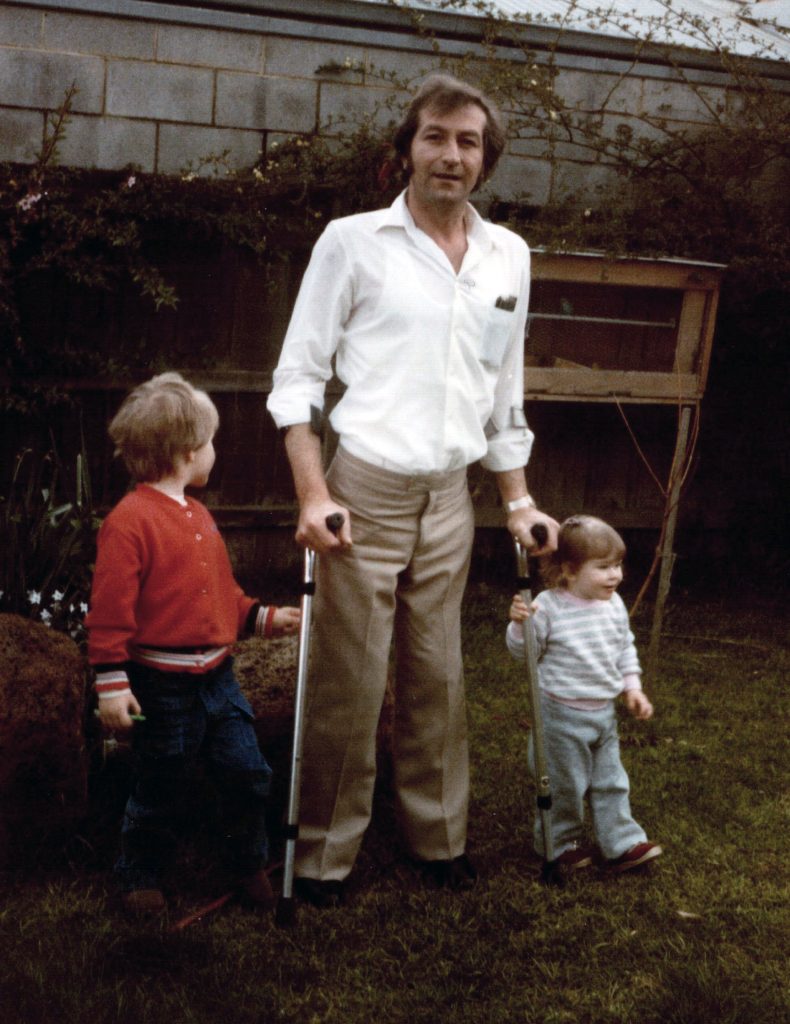
The writer’s paraplegic husband required courageous, super-human efforts just to get through each day of his normal life. To walk in an upright position, he used calipers and crutches. He lifted and carried his body around from dawn to dusk. Without these important mobility aids he was wheelchair bound. Without his wheelchair he was ground bound. From the age of 6½ until age 60 every step he took he did a full body lift using his upper body in a way it was not designed for. His hands were a blister and callous haven and the top of his right leg a perpetual beacon for painful, full of blood and puss pressure sores. The constant improper use of his upper body eventually took its toll. A full shoulder replacement was required. When he could no longer use calipers and crutches to enable him to be in a standing position he was wheelchair bound until the day he died on 19 July 2019. He never complained. He just got on with his normal life.
One needs to understand exclusion before one can “promote inclusion”.
‘Inclusive’ is an adjective. ‘Inclusion’ is a noun. ‘Include’ is a verb.
Inclusion for the purpose of modern terminology is about dividing everyone up into categories then making policy and law to make sure every category has “human rights” that advocates, and diversity champions can fight for. Life becomes a fight, a consistent, endless and time consuming struggle.
Inclusion stipulates it is OK to exclude if we have done our best within the legal, health and safety, and cost restraints.
The colour of one’s skin, eyes, hair, or what language one speaks make no difference to the life of a person who cannot stand upright or walk, or cannot see, or cannot hear. Where one lives may. The material supports available may. But the human condition is the same, same, same.
